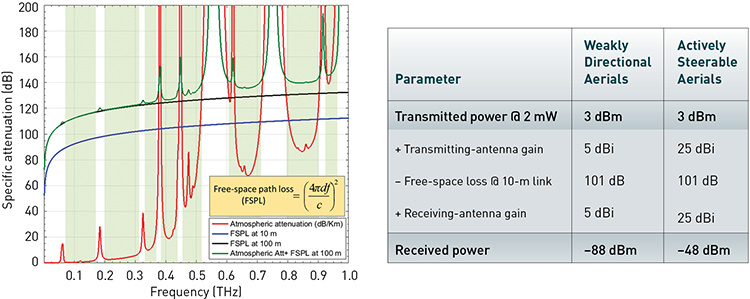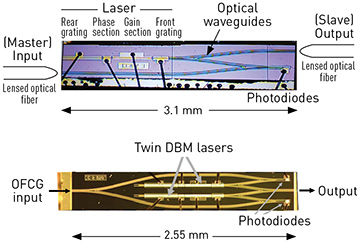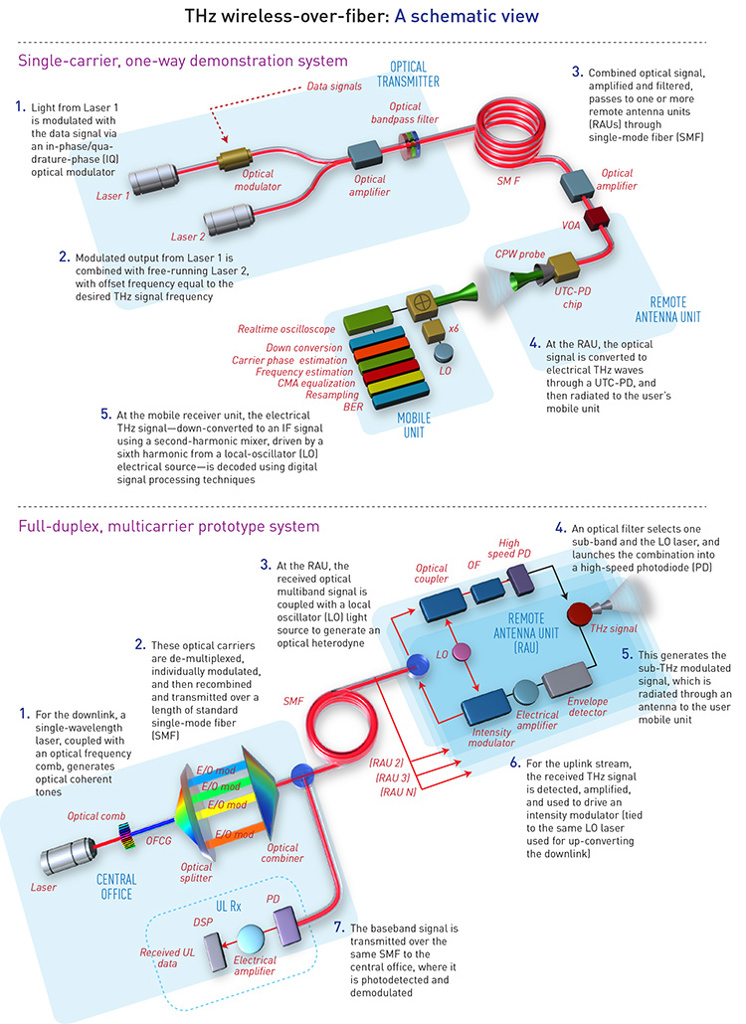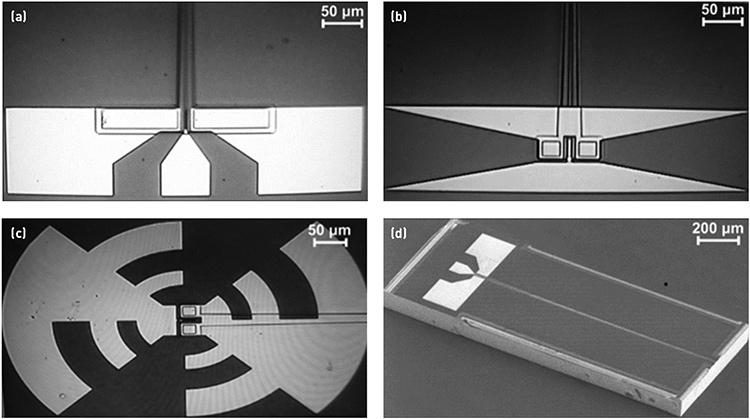 [Getty Images]
[Getty Images]
Consumer demand for a range of image-rich services and mobile apps has driven a continuous increase in wireless data traffic. In the early 2000s, “Edholm’s law” predicted that wireless data volumes would double every 18 months—a prediction borne out by the latest report from Cisco’s visual networking index, which showed an increase in global monthly mobile data traffic from 2.1 exabytes (2.1 billion gigabytes) in 2014 to 3.7 exabytes in 2015. And users’ appetites for potential applications such as HDTV, high-quality videoconferencing, 3-D displays and instant access to large amounts of data will likely fuel continued, exponential increases in data traffic demand.
Accommodating those increases presents a major challenge to wireless communication networks, which face some fundamental limitations in data speed. Those speed limits are based on the Shannon theorem, which holds that, for a given average signal power, the channel bandwidth limits the maximum data rate that can be attained with a sufficiently low error rate. There are thus two ways to boost data speeds. The first is to increase the signal’s spectral efficiency, or the number of transmitted data bits per second for the same equipped bandwidth. For a given bit error rate, this approach requires higher signal-to-noise ratio and, hence, higher transmitted power. That’s a major concern for mobile, battery-operated devices.
The second approach has been to use ultra-high bandwidths available beyond the 20 GHz frequency band. And one part of the spectrum with considerable, as yet unexploited potential is the THz frequency region, ranging from 0.1 to 10 THz.
THz spectroscopy and imaging systems have become increasingly important in applications ranging from detecting explosives and concealed weapons to pharmaceutical quality control. Yet several technical hurdles—in particular, the rapid attenuation of THz signals in free space—have held back the use of the THz band in wireless communication. New photonic systems are now emerging, however, that combine the high bandwidth potential of THz wireless communication with the long-haul potential of optical-fiber communication. Such “wireless over fiber” systems could make THz communication part of the solution for meeting the demand of ever-greater mobile bandwidth.
New photonic systems are emerging that combine the high bandwidth potential of THz wireless communication with the long-haul potential of optical-fiber communication.
Searching for unallocated spectrum
At present, the lower frequency bands are fully packed with electromagnetic spectrum allocated for radio, television, cellular, Wi-Fi, radar and other uses. Wi-Fi, the most widely used wireless public network, offers license-free spectrum, low implementation costs and ease of access. Yet these advantages, too, are limited to the assigned bandwidth. Wi-Fi capacity based on IEEE standard 802.11n/ac can provide speeds of up to 100 Mbit/s for 40 MHz bandwidth at 2.4 GHz, or
433 Mbit/s for 80 MHz bandwidth in the 5 GHz frequency band. Wider spectral bands have been allocated at millimeter-wave frequencies from 30 GHz to 100 GHz, with a total bandwidth of less than 7 GHz (as in 60 GHz, 70 GHz and 90 GHz frequency bands). These bands can support data rates up to 10 Gbit/s.
The THz frequency region, currently unallocated, offers the potential for systems with much larger bandwidth, ranging from a few GHz to more than
100 GHz. As a result, a variety of international standards organizations are exploring the technical and operational characteristics of services in the unallocated frequency range above 275 GHz. And research groups in Europe, Japan, the Americas and elsewhere, supported by both industry and government funding, are moving forward with R&D in THz wireless link technology.
One technical issue in these efforts involves the current lack of compact, efficient generation and detection systems, which has so far limited access to the THz communication bands. But advances in device technologies can enable short-range (less than 100 m), high-capacity (greater than 10 Gbit/s) transmission in the THz region. For wireless communication, a bigger hurdle for millimeter-wave and THz systems lies in free-space attenuation and molecular absorption, particularly by water vapor.
 Attenuation and absorption of THz radiation: As the chart shows (left), absorption of THz radiation by atmospheric gases limits THz transmission to specific frequency windows. Further, free-space attenuation causes signal strength to fall off significantly with distance. However (table, right), the free-space attenuation penalty is reduced through the use of actively steerable antennas, which can significantly boost the received signal relative to weakly directional aerials. [Note: In chart, specific attenuation due to atmospheric gases is based on calculated model ITU-R P676-10 for an air pressure of 1013 hPa, a temperature of 15 ºC and a water vapor density of 7.5 g/m. In table, data are for THz signals transmitted at 300 GHz.]
Attenuation and absorption of THz radiation: As the chart shows (left), absorption of THz radiation by atmospheric gases limits THz transmission to specific frequency windows. Further, free-space attenuation causes signal strength to fall off significantly with distance. However (table, right), the free-space attenuation penalty is reduced through the use of actively steerable antennas, which can significantly boost the received signal relative to weakly directional aerials. [Note: In chart, specific attenuation due to atmospheric gases is based on calculated model ITU-R P676-10 for an air pressure of 1013 hPa, a temperature of 15 ºC and a water vapor density of 7.5 g/m. In table, data are for THz signals transmitted at 300 GHz.]
The free-space loss rises with the square of the carrier frequency—for a 10-m link, for example, a THz system will have free-space losses of around 100 dB at a carrier frequency 300 GHz. Moreover, water vapor absorption effectively divides the spectrum into several transmission windows. The high losses in the path require high antenna gain, with line-of-sight operation, compared with the low-gain, weakly directional antennas that can be used at the low-GHz radio frequencies. In the THz frequency realm, however, antennas are sufficiently small that this problem can be addressed with actively steerable antennas at the transmitter and receiver, which can increase the received power by as much as 40 dB.
Wireless-over-fiber technology can also play an important part in overcoming the limited range of wireless THz systems, owing to the low losses in the optical-fiber cables for long-haul transmission. Depending on the link distance, this frequency band can support potential applications in wireless front- and backhauling systems, wireless personal area networks in smart homes, kiosk downloads, and device-to-device communications. Making such systems work in the real world, however, demands a photonic approach to generating and distributing THz signals.
Photonics for the THz signal
Methods for generating and detecting THz signals have advanced considerably in recent years. The main objective is to obtain a high-quality signal with the high output power necessary for radio communication and other THz applications. That goal can be achieved electronically or photonically. Numerous electronics-based approaches to THz generation demonstrated thus far include schemes using Schottky diodes, gallium arsenide and indium phosphide integrated circuits and resonant tunneling diodes.
A photonic approach, however, has a number of advantages. First and foremost, it can generate THz signals that are compatible “out of the box” with wireless-over-fiber distribution, and that can be directly integrated into existing, low-loss optical-fiber networks. Such an approach also allows amplitude and phase modulation with high-speed data. And recent progress in photonic integration technologies for optical components could enable compact, power-efficient coherent THz systems with high spectral purity.
The most promising photonic technique for optical signal generation is mixing two optical sources with different frequencies in a photodiode or photomixer. The mixer produces an electrical signal that has a frequency equal to the frequency difference between the two optical sources, and that exhibits phase noise fluctuations due to the linewidths and relative frequency fluctuations of the two laser sources.
Photonic integration of a monolithic dual-wavelength source for millimeter- and THz-wave generation can provide compact, tunable sources with improved spectral purity. In one monolithic-integration approach, two distributed-feedback (DFB) lasers are grown side by side, and a multimode-interference (MMI) coupler combines the wavelengths. This approach means that both lasers encounter the same environmental fluctuations, but the system still suffers from thermal instability and phase noise, which can cause performance to deteriorate. Another proposal is a fully integrated transmitter with two DFB sources, an optical modulator and photodetector, which can provide continuous tuning over the frequency range from 5 GHz to 110 GHz, with linewidth depending on the DFB laser linewidth (typically less than 1 MHz).
THz signals with higher spectral purity may come from optical phase-locked sources, such as those based on optical phase-locked loops (OPLL) combined with a frequency-comb source. The comb source provides optical phase-correlated lines, spaced in frequency by a supplied RF reference signal. In the OPLL technique, a slave laser is locked to the incoming optical reference signal through a negative feedback loop to compensate for the phase variation between the slave laser and the selected comb line. The main limiting parameter is the feedback loop’s delay, which must be sufficiently short to enable tracking of the phase variation of the heterodyne beat between comb line and slave laser. One hybrid OPLL integration system has achieved a frequency of up to 300 GHz, with an optical delay of less than 50 ps.
 Photonic integrated chips for single (top) and dual (bottom) monolithic optical phase locked loops (OPLL). [R.J. Steed et al., Opt. Express 19, 20048 (2011); L. Ponnampalam et al., J. Lightwave Technol. 29, 2229 (2011)]
Photonic integrated chips for single (top) and dual (bottom) monolithic optical phase locked loops (OPLL). [R.J. Steed et al., Opt. Express 19, 20048 (2011); L. Ponnampalam et al., J. Lightwave Technol. 29, 2229 (2011)]
A recently developed InP photonic integrated circuit (PIC) for single and dual OPLL systems could form the foundation of a compact, cost-effective THz system. The single OPLL PIC contains a distributed Bragg reflector (DBR) laser, and a PIN photodiode with passive optical waveguides for coupling the light. The optical delay is reduced to few tens of picoseconds. This PIC showed a phase noise of less than –80 dBc/Hz at an offset frequency of 10 kHz. The dual OPLL chip can be tuned up to 1 THz, depending on the tuning range of the slave lasers and the frequency span of the optical comb source.
UTC-PDs to boost signal power
Another key component of a THz system, the photomixer, must have high responsivity, high saturation output power and a broad bandwidth response to obtain high output power in the THz range. A uni-traveling carrier photodiode (UTC-PD) can meet these key requirements. The short transit time for electrons and low space charge effect in the depletion layer enable a high-bandwidth response (greater than 1 THz) for UTC devices.
In one system, in which a UTC- PD was integrated with a broadband log periodic antenna, an optical power input of 430 mW produced a radiated power of 2.3 μW at 1.04 THz. An enhancement in the radiated output power and bandwidth was also obtained in a travelling wave (TW) UTC-PD. Integrating a TW UTC-PD with a resonant antenna yielded further gains in radiated output power and bandwidth, with 100 mW of optical power input producing 24 μW of radiated power at 914 GHz.
For a single UTC device, power dissipation limits restrict the total emitted power, but a power-combining technique based on an array of photodiodes can produce higher output power levels. In one setup, dual UTC photodiodes in a single monolithic chip achieved an output power of more than 1 mW at 300 GHz with 20 mA photocurrent per PD.
Putting the system together—with fiber
Given the recent advances in compact, high-power, spectrally pure THz sources, researchers have made increasing strides in wireless-over-fiber communication setups in the W-band (75- 95 GHz) and for frequencies above 100 GHz.
In 2008, for example, researchers demonstrated a photonics THz system for real-time transmission with amplitude modulation on a single carrier enabled via a direct-detection scheme and recovery via a square law detector. Wireless transmission at 120 GHz, for 10 Gbit/s across 400 m, has been reported. The highest data rate for a real-time single channel, reported in 2013, reached 48 Gbit/s at 300 GHz, using dual polarization transmission. Numerous groups have also investigated phase-modulated transmission to achieve higher spectral efficiency.

The infographic above provides schematic illustrations of two prototype wireless-over-fiber systems. The first is a typical experimental system for single-carrier, one-way wireless-over-single-mode-fiber (SMF) transmission, involving heterodyne detection of the combined output of two lasers through digital processing offline at the receiver. The second is a full-duplex, multicarrier-based system that seeks to maximize the overall data rate and achieve higher spectral efficiency, and that, for the downlink stream, uses a single-wavelength laser to generate coherent tones via an optical frequency comb, thereby creating a number of phase-correlated optical carriers.
The multicarrier configuration in particular has a number of advantages that could ultimately help in practical installations. On the downlink side, it allows the remote antenna unit (RAU) to be reconfigurable, and the use of a tunable local-oscillator (LO) laser enables frequency reuse. This gives the system more flexibility for so-called picocell architectures—small, enterprise-scale base stations typically covering a limited area, that can provide more coverage and large capacity for mobile units. The system also enables the aggregate transmitted data rate to be increased while using limited-bandwidth optoelectronic devices. The LO laser used for upconverting the downlink is also used for the uplink stream. The overall scheme is flexible in terms of the signal modulation format and baud rate, the number of subchannels in the multiband and the THz carrier frequency.
Using an approach similar to the diagrammed multiband photonic THz generation scheme, our group, in 2016, demonstrated an aggregate downlink data rate of 100 Gbit/s in five sub-bands, modulated with quadrature phase shift keying (QPSK), over the full 220-to-280-GHz frequency band, and an uplink signal with 10 Gbit/s on-off keying (OOK). Although the demonstrated system achieved only a very short link (approximately 2 cm) due to the limited UTC power, using polymethylpentene lenses at both the transmitter and receiver enables an increase to more than 70 cm, with the error rate still well below correction limits.
 Scanning electron micrographs of TW-UTC devices fabricated with: (a) coplanar probe contacts, (b) bow-tie antennas, (c) log-periodic antennas and (d) resonant antennas. [E. Rouvalis et al., Microw. Theory Tech. IEEE Trans. 60, 509 (2012).]
Scanning electron micrographs of TW-UTC devices fabricated with: (a) coplanar probe contacts, (b) bow-tie antennas, (c) log-periodic antennas and (d) resonant antennas. [E. Rouvalis et al., Microw. Theory Tech. IEEE Trans. 60, 509 (2012).]
The road ahead
Particularly in light of recent progress in THz photonics technology and integration, THz wireless links could provide part of the solution for ultra-broadband wireless in an age where the appetite for data delivery is continually increasing. Yet many challenges also remain for the full development of THz-based wireless links. These lie mainly in four areas:
Photonic integration. Monolithic photonic integration plays an essential role in improving overall system performance in terms of cost, size and reduced coupling losses between photonic components.
Wireless transmitted power. THz transmitters still lack output power, which is limited by UTC photomixer optical responsivity, frequency response and generated output power. The design of multiple photodiode arrays and antenna arrays can overcome the power limitation in long-distance transmission, and allow for mobile device tracking. Target powers are in the milliwatt range.
Beam directivity. Implementing optical beam-forming using phased-array antennas reduces the required transmitted power at THz frequencies by directing the power to mobile units. However, the beam steering capability is still difficult to achieve over the large bandwidths required for multi-Gbit/s transmission.
THz amplification. Using THz transmitter power amplifiers and receiver preamplifiers can improve system performance over long transmission distances. Thus THz transistor amplifiers, with high power and wide bandwidth and integrated with UTC-PDs, offer one possible technique to increase THz power. Cost reduction in THz transistor integration technology will play a crucial part here.
Notwithstanding these challenges, the combination of integrated solutions and receivers of lower noise figure should enable THz wireless links with throughputs matching optical communication systems—and help move forward the next generation of wireless data.
Haymen Shams and Alwyn Seeds are with the Department of Electronic and Electrical Engineering, University College London, U.K.
References and Resources
-
S. Cherry. “Edholm’s law of bandwidth,” http://spectrum.ieee.org/telecom/wireless/edholms-law-of-bandwidth (1 July 2004).
-
C. Liu and A. Seeds. “Wireless-over-fiber technology: Bringing the wireless world indoors,” Opt. Photon. News 21(11), 28 (2010).
-
R.J. Steed et al. “Monolithically integrated heterodyne optical phase-lock loop with RF XOR phase detector,” Opt. Express 19, 20048 (2011).
-
L. Ponnampalam et al. “Monolithically integrated photonic heterodyne system,” J. Lightwave Technol. 29, 2229 (2011).
-
E. Rouvalis et al. “Continuous-wave terahertz generation from ultra-fast InP-based photodiodes,” Microw. Theory Tech. IEEE Trans. 60, 509 (2012).
-
T. Kürner and S. Priebe. “Towards THz communications—Status in research, standardization and regulation,” J. Infrared Millimeter Terahertz Waves 35, 53 (2013).
-
A.J. Seeds et al. “Terahertz photonics for wireless communications,” J. Lightwave Technol. 33, 579 (2015).
-
International Telecommunication Union. “Technical and operational characteristics of the active services operating in the range 275 -1000 GHz,” www.itu.int/pub/R-QUE-SG01.237 (2015).
-
“Cisco Visual Networking Index : Global mobile data traffic forecast update, 2015–2020,” Cisco (3 February 2016).
-
“IEEE 802.15 WPAN Task Grooup 3d 100 Gbit/s Wireless (TG 3d (100G)),” www.ieee802.org/15/pub/IGthz.html (2016).
-
H. Shams et al. “Sub-THz wireless over fiber for frequency band 220–280 GHz,” J. Lightwave Technol. 34, 4786 (2016).
